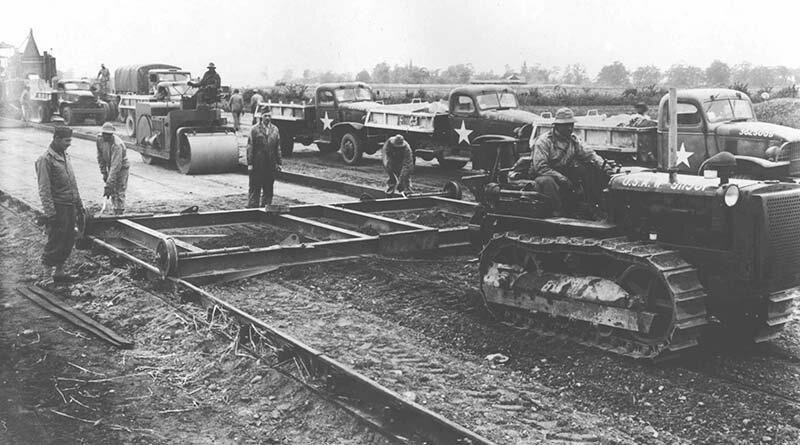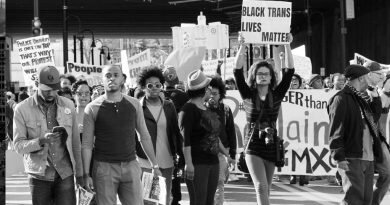World War II Hidden Black Heroes
Black History Month, offers us the opportunity to recall the important role of Black Americans during World War II.
Segregated aviation engineer battalions were 800-man units which constructed airfields overseas during World War II between 1940 and 1945. They were specially trained units whose mission was to construct, conceal, maintain and defend airfields in every theater. Of the 157 separate aviation engineer battalions that saw duty during the war, 48 were segregated units designated as “Colored.”
Overcoming many challenges inherent in a segregated situation, these men served proudly throughout the war and made a significant contribution to the overall base construction effort.
Pacific theater
The majority of Black engineer units served in the Pacific or China-Burma-India theater.
The 810th and 811th were the first Black engineer units shipped out. The 810th, originally told they were headed for a cold climate, had a most uncomfortable five-week trip to Australia because they had packed their “suntans” and donned winter uniforms.
After a brief stay in Australia, the unit moved to the French island of New Caledonia and was given responsibility for constructing Plaines des Gaiacs, which became the most important base on the island, and eventually one of the most highly developed in the entire theater. After arriving in New Caledonia, the 810th unloaded ships, often during enemy bombings, while they waited three weeks for their equipment to arrive. Once it came, they had to move it more than 100 miles over a mountainous trail to the construction site, a task that necessitated felling trees, reinforcing bridges and fording streams.
They arrived just in time to place the runway at Plaines des Gaiacs in service for fighter aircraft involved in the Battle of the Coral Sea. The unit worked in shifts, 24 hours a day, 7 days a week, building an all-weather runway and expanding the facilities to accept B-17s. The major construction went on for months on this critical airfield.
Meanwhile, at a nearby location, the 811th not only worked on airfield development but also used its heavy equipment to transport crated planes 35 miles from the harbor to an assembly point.
The 811th finished its Pacific tour at Iwo Jima. While building airstrips and quarters for bomber groups, its platoons encountered numerous Japanese holed up in caves. The 811th promptly captured the Japanese and turned them over to the infantry.
China-Burma-India theater
Black aviation engineer units were the first five to arrive in the China-Burma-India theater. However, they did almost no airfield work.
The units fell under the command of the Corps of Engineers to participate in building the Ledo Road that stretched from India to Burma to carry supplies on to China. From 1942 to 1945 they hauled rocks, dug ditches, laid culverts, rolled roadbeds, erected bridges, dozed out bamboo jungles and fought erosion on mountain slopes where the road should be. The challenges presented by monsoon rains and alternating heat and cold, as they worked in jungles and on mountains, only served to relieve the otherwise monotonous road-building work.
The work of the 823rd Aviation Engineer Battalion was hampered by the fact that its six bulldozers, the only available machines with sufficient power and traction to clear the jungle, had arrived without blades. The engineers borrowed a blade from a nearby British unit until theirs were delivered five months later.
Finally, the road was complete in January 1945. But this just meant that the units could now make the thousand-mile trip over the road to China to begin constructing airfields. Making repairs on the road as they progressed, the black engineers occasionally had to scramble to rescue men and machines that had slipped off the road on sharp curves. Upon their arrival in China, the engineers were welcomed by cheering crowds and trigger-happy Chinese soldiers looking for a ride. After only a few months of work, the war was over and their long trip home began.
Mediterranean, European theaters
Only a handful of Black aviation engineer units were sent to Europe. Of the 48 battalions organized during World War II, only seven were in Europe when the war ended there in May 1945.
In addition to problems such as equipment shortages, long hours and difficult work, aviation engineer leaders were concerned with the long-term presence of Blacks in England. Special efforts were made to ensure problems did not arise between black and white troops and with the English people.
General Dwight D. Eisenhower helped establish a firm policy for the troops under his command in England by stressing, “Troops must train together, work together and live together in order to attain successful teamwork in campaign. The sharing of work opportunities and recreational facilities must be willingly accepted and utilized to unite more closely the troops of our several commands.”
Most Black engineers found the English much more accepting than the Americans at their training base.
The black aviation engineer units usually faced the same difficulties as all engineering battalions. For example, the 812th shipped out of Charleston in May 1942 to build bases in south-central Africa and help maintain the southern aircraft ferry route.
After constructing airfields in Kenya, they found themselves on ships bound for Egypt, followed by a 900-mile truck ride across the desert to Benghazi, Libya. At this location, the unit established water points, constructed Nissen huts, devised camouflage and deception devices such as decoy fires, dummy runways and dummy aircraft. They continued to improve and stabilize the base for Ninth Air Force’s B-24s that bombed the Ploesti oil fields in Rumania. In addition, they built a pipeline from the sea to keep the airfield sprinkled. The unit then moved to the islands of Sicily and Corsica where they built bases at more than a dozen sites until the end of the war.
In spite of the difficulties encountered, the whole World War II experience for members of the Black aviation engineer units proved to be quite valuable. During the war years, they acquired a wide variety of technical experience. Men who otherwise may have had little opportunity to work as heavy equipment operators or electricians, built airfields out of jungles, constructed roads over mountains and completed aircraft hangars on Pacific islands.
At the end of the war, aviation engineers had built or improved more than 1,000 airfields around the world. Black engineers were a major part of that success.
Sadly, a board of officers meeting in 1946 to evaluate the aviation engineer experience discussed the future of Black engineer units.
Their recommendation reflected the times: “It follows that, because technical skills are relatively seldom attained by individuals of the colored race, Aviation Engineer units requiring a high proportion of technical skills would not normally be colored. On the other hand, colored personnel may be used, without comparable sacrifice of efficiency, in units wherein labor requirements are predominant.”
Despite these observations, the Army and Air Force began to integrate after President Harry S. Truman issued Executive Order 9981 in 1948, and the comments were soon proved erroneous.
Training
The training for these units was as uneven as their all-white counterparts. However, the units faced the additional difficulties of segregation, substandard living and recreational facilities, and suspicion or outright hostility from the white units and the local civilian population living near the training bases.
Instead of training in their wartime duties, Black units were frequently assigned the more tedious and labor-intensive tasks during training without being allowed the opportunity to demonstrate their capabilities. The 857th, assigned to Eglin Field, Fla., for training was primarily used as labor troops at the installation and only participated in one field training problem, the completion of a heavy bar and rod runway.
The 811th had only trained for slightly more than one month when it departed for the Pacific. Its limited training time was further hampered by an unusually heavy snowfall that hit Langley Field, Va. However, their presence in theater was so critical that any shortcomings in training were overlooked. On the other hand, the 810th had trained for six months by operating heavy equipment, building roads and bridges, and doing general construction work at their home station of MacDill Field, Fla. One company moved to Greenville, S.C., where it constructed camouflaged revetments for observation planes, and to Wilmington, N.Cl., repeating the job for fighter planes and building asphalt connecting taxiways.
A friendly rivalry developed as the unint began working with a white Seabee engineer unit on various projects. The 811th set the island record for B-24 hangar construction. Later, the unit commander told his men they could have a day off for every day under the existing Seabee record for constructing a radio range.
Despite heavy rains, the unit beat Seabees’ time by 13 days.






